
For an effective leader, leadership is not just a function of following a systematic approach; it is also a function of leading through consolidated values and principles. The bulk of workplace leadership is concerned with people-people interactions. Every facet of operation at work is either influenced by or involves, people.
As a leadership development strategist and executive coach, I have observed the struggles of several leaders in being efficient in their leadership capabilities. This is largely due to the absence of a structure of effective self-leadership and non-alignment of values consistently engaged to produce results.
Having identified the lacuna and based on close to a decade of research, I developed a framework that comprises twelve vital ingredients every effective, well-performing leader must possess. These twelve components are grandly interconnected and are guaranteed to transform leaders from good to great. The model, while tailored for workplace leaders, is suitable for addressing any expression of leadership. The leader who seeks the results of one of the dozen must be willing to engage the dozen. The elements of this framework include Clarity, Character, Competence, Commitment, Connection, Confidence, Communication, Consequence, Consistency, Critical Thinking, Consideration, Community as also captured in my book, The Leadership Guardian – How Futurists Develop Visionary and Effective Leadership At Home, Work and Nations.
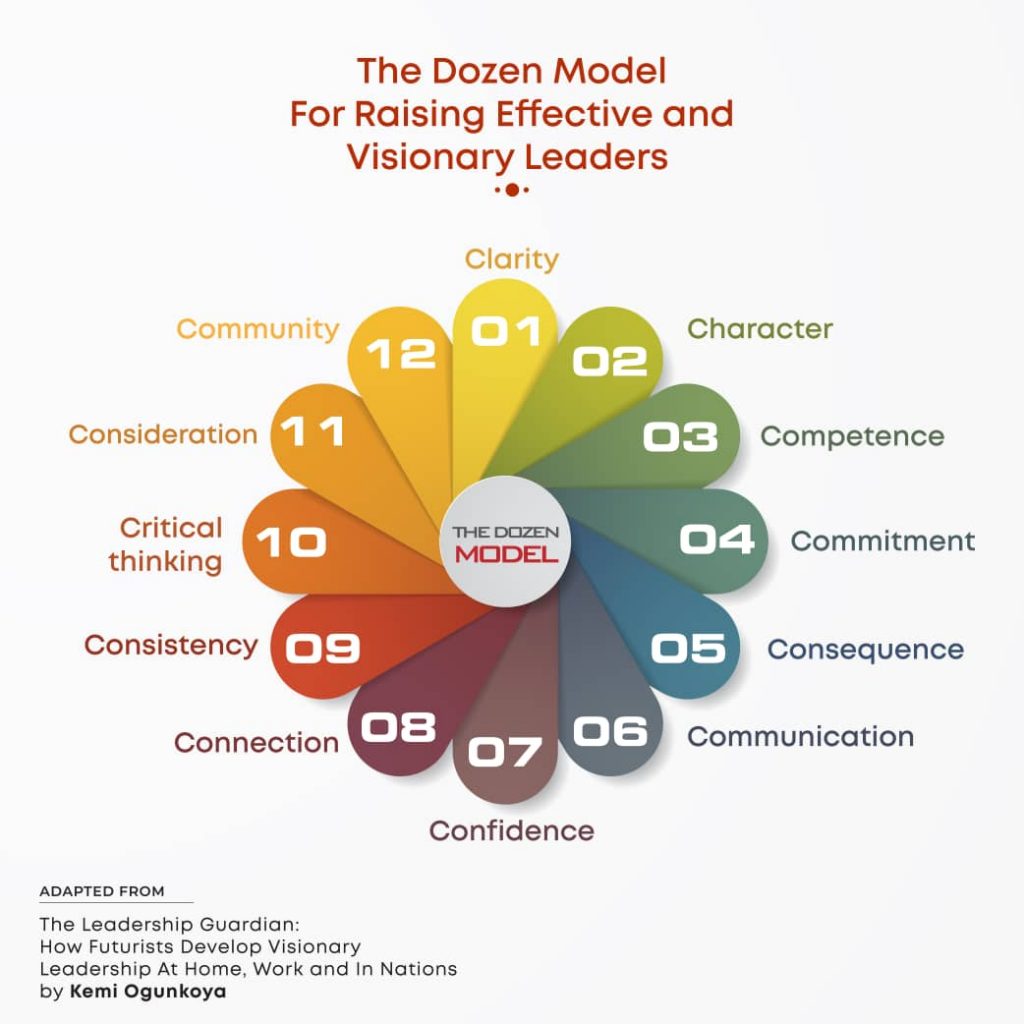
Clarity: An organisation’s vision is only as important as the people who run with it. The vision of the organisation needs to be clear and in alignment with business operations. Top leaders know that team members need a simplistic understanding of the vision for excellent performances. Beyond that, members must recognize their strengths, weaknesses, opportunities, and threats.
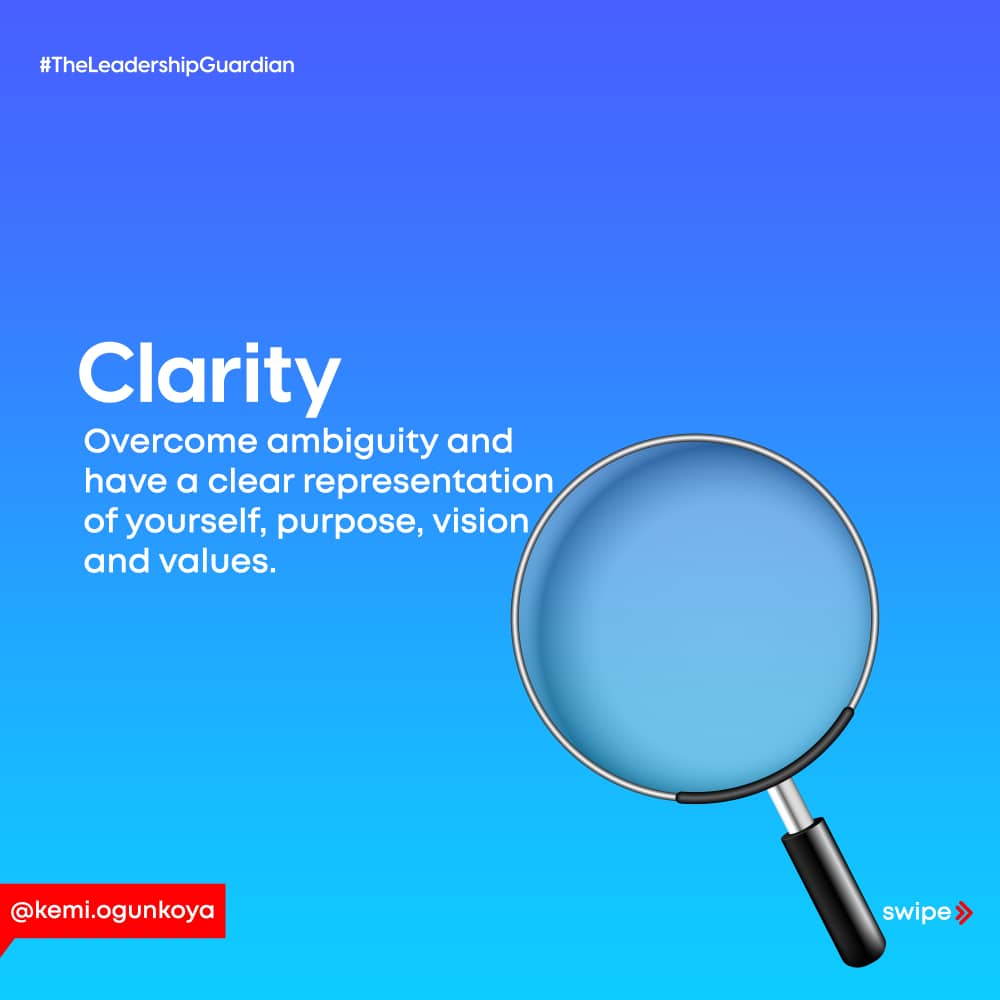
How do their unique personalities fit into the overall scheme of things? What opportunities can be harnessed through their set of skills? Do they have a clear understanding of their roles and responsibilities? This is all strongly rooted in organisational clarity. The clearer a vision is, the clearer the expectations on employees are, and the easier execution comes. Leaders who engage clarity in operations mould themselves – and their members – into better performers.
Character: Character is at the crux of effective leadership development. Unfortunately, it is an aspect that has been subjected to the back burner for so long. When the subject of leadership is discussed elements like; Vision, Charisma e.t.c is usually at the forefront of such conversations, however without grounded character as a key business element a lot of business leaders will fail to build sustainable and profitable businesses. Character is mostly a reflection of one’s value system. Leaders in the workplace need to focus on being an ambassador of good character, grounded and consolidated by corporate values.
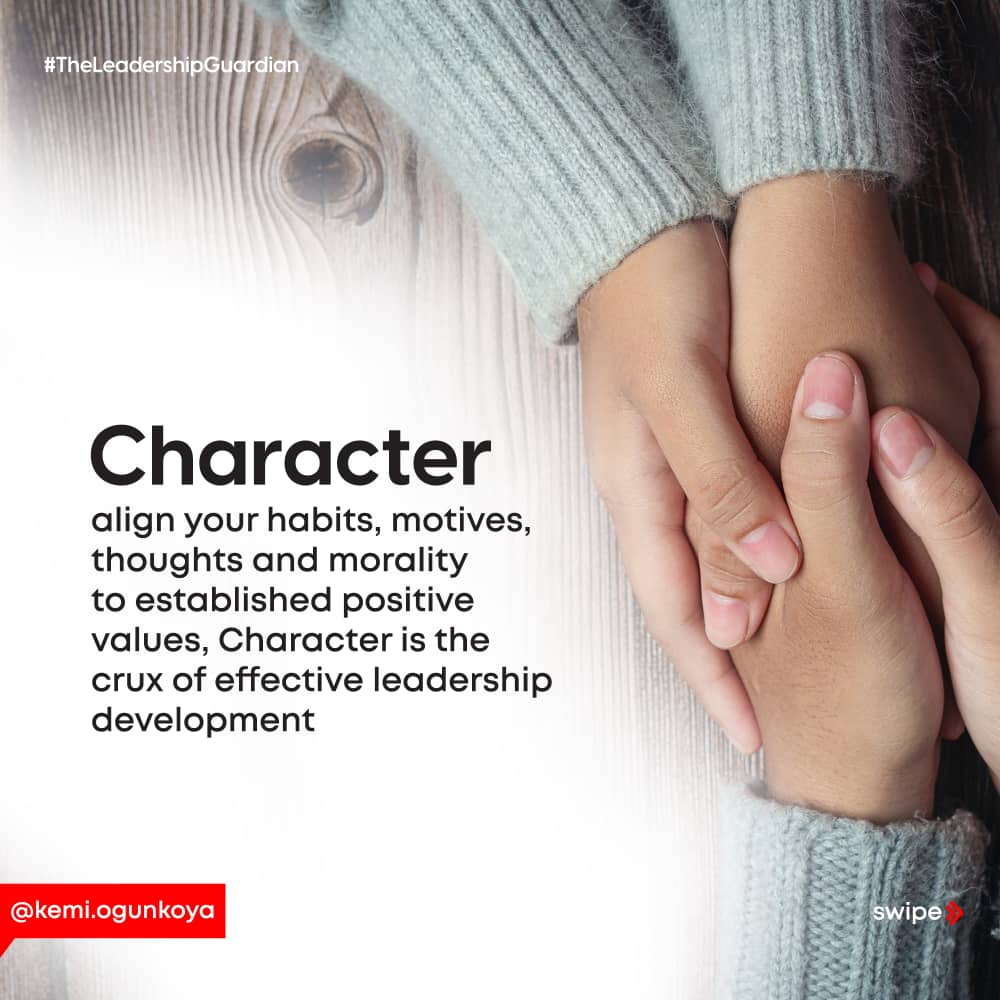
Character should be a reflection of your core values as a team. What does your organisation pride? This may be influenced by your brand’s speciality and the industry within which you operate, but most importantly by the values adopted by leaders and individuals within the organisation. Excellent customer service for example is important for any organization, but the bars may just be a tard higher for a logistics or delivery brand. Identify your values as an organization, and determine how this may reflect in your attitude, in your disposition. Ensure that corporate values are entrenched in every aspect of operations and programmes are put in place to ensure a culture that thrives on good character. Work ethic, innovation, excellence, respect, diligence, honesty, responsibility, are certainly good foundational blocks every employee should imbibe.
Competence: Nothing lends credibility to you or your team than your competence with work, with business, and in execution especially in today’s knowledge-driven VUCA (Volatile, Uncertain, Complex and Ambiguous) world. The need for mastery and competence is at it’s highest levels, things are changing at the speed of light and so must business operations, knowledge base and leadership requirements.
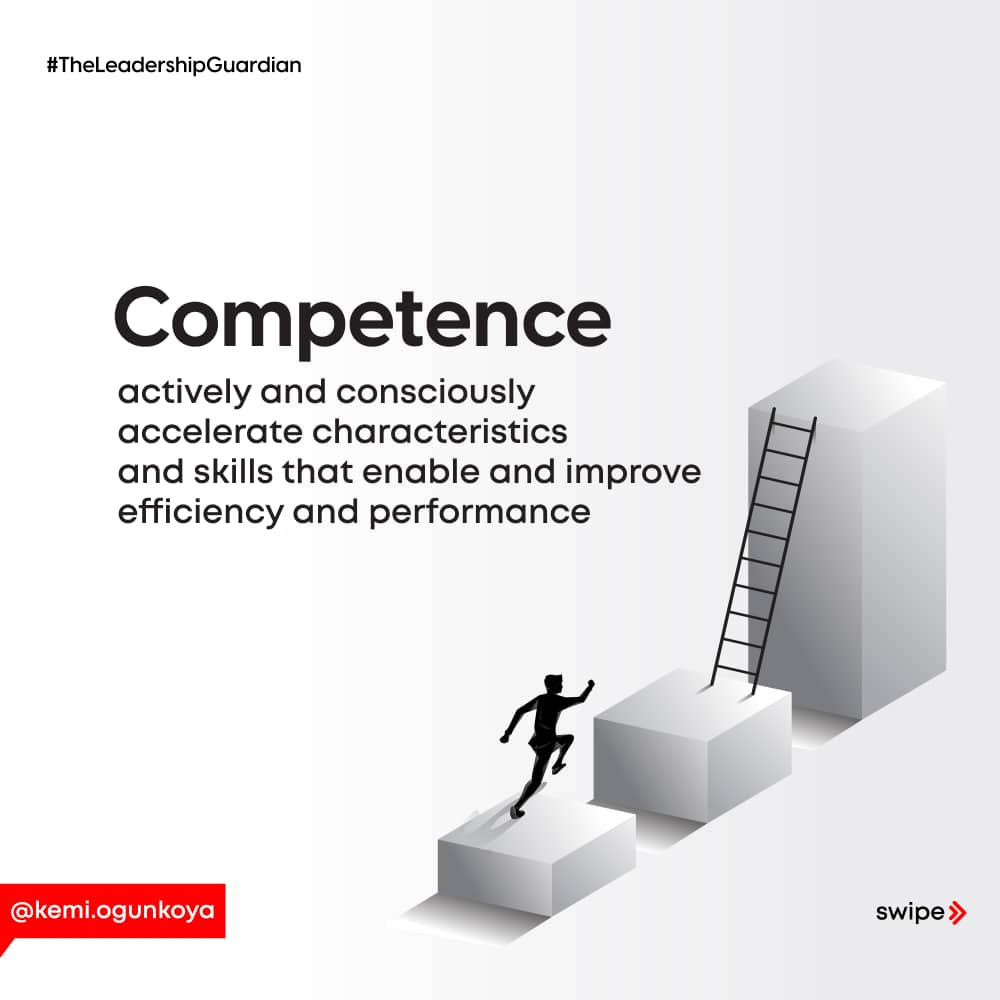
Companies may be so immersed in growth strategies, in satisfying the client base, and in living up to the standards, that they neglect the need for development. The same is true of leaders. Practice self-development. Identify the core thing you do, and do it well. What you are called to be is your best, and this may not always fit into people’s expectations of you. Your team would trail your steps when they observe your keenness to harness a better version of you each day.
Commitment: Commitment is a measure of your steadfastness, your loyalty towards a cause. Commitment is a leader’s unflinching dedication to every element of a business; the vision, mission, people, customers and all stakeholders. In leadership, your commitment is seen in your ability to remain steadfast in everything you embark upon. Regardless of the speciality of the situation, a committed leader ensures to stay rooted in everything he commissions. If you’re asked to chair a discussion on training and self-growth, how committed are you to ensuring all participants benefit from the session?

Commitment works with consistency, another characteristic in the dozen model. When you choose a cause – a project, a habit, a task, a conversation – you show excellence by staying with it till there’s nothing left to be done.
Connection: This speaks to your relationship with fellow leaders, with your employees, and everyone affiliated with your work as a leader. Communication is pivotal in leadership, and connection weighs even greater. Creating a connection may seem tasking as a lot of leaders are not deliberate about building relationships. You wouldn’t connect to a hotspot if you didn’t know the password, so why hope for a connection with an individual if you are not willing to know them.
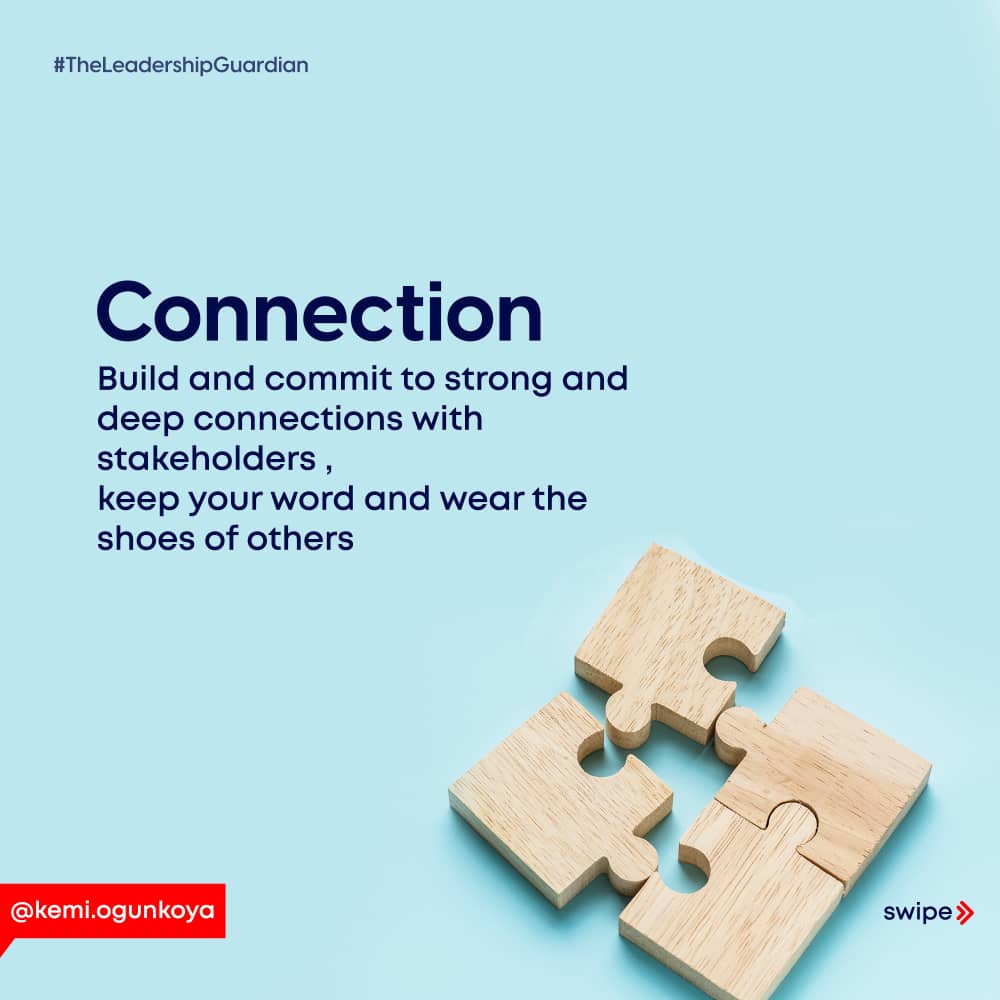
Connection-building with your employees, leaders, partners, or clients could happen through means like casual conversations that do not revolve around work or projects, encouragement of feedbacks and opinion-sharing, learning about their likes, interests, and unique skillsets. The more you commit to this, the easier you’d find connecting. The better the connection, the better the relationship, which depending on the stakeholder involved would bridge, profitability, higher performance, increased productivity, increased business revenue, business sustainability and much more.
Confidence: Intrinsic confidence is a product of continuous positive affirmations of your abilities, your qualities, your tendency towards excellence. But extrinsic confidence, which comes from what people say of you, what your results say of you, what circumstances say of you, is pivotal for excellent leadership. How self-aware are you as a leader? Have you identified what informs your uniqueness?
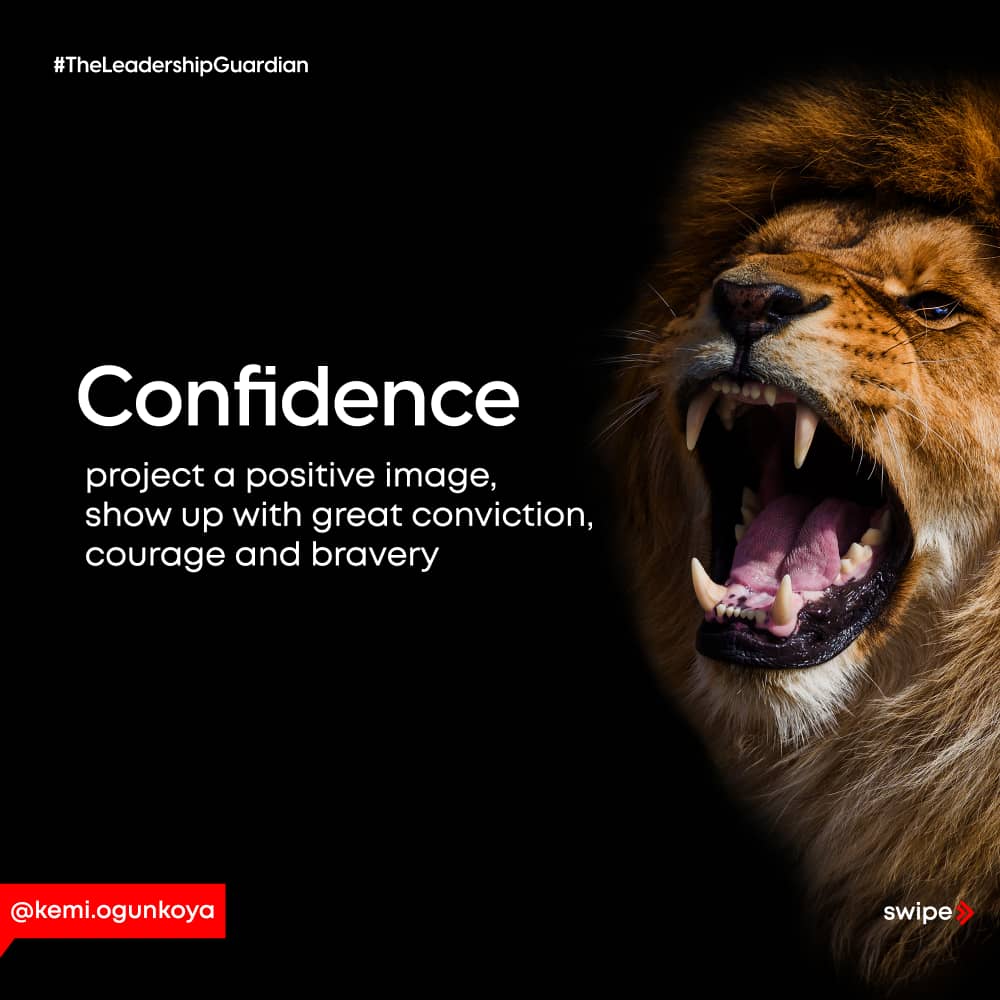
Finding ways to leverage your unique identity is a confidence booster. On a grander scale, your words and gestures shape the confidence of your team. Be committed to helping others become better, when people are a better version of themselves, they will be better at work too. Appreciate others, mentor them, encourage them, and celebrate them. Lean towards positive feedback. Learn to give feedback that motivates rather than discourages. Say, “I think what you’re suggesting, this concept, is fantastic. I think you could consider adjustments in _____ and _____ to generate a better proposal.” When highlighting weaknesses, be quick to suggest ways to strengthen them. We are structured to retain how people make us feel, and leaders are not exempted. If it won’t help their confidence, then don’t express it.
It is important that as a leader you hone your confidence and also become a bridge to helping others build theirs.
Communication: Communication is a tool that foreruns connection. You cannot expect to form a connection if communication is absent. The contextual expression of workplace communication transcends casual conversations. Communication isn’t just about talking, or about having something to say. It is seeking to reach out to the core of an individual through words, gestures, expressions, observations, and sometimes silence.
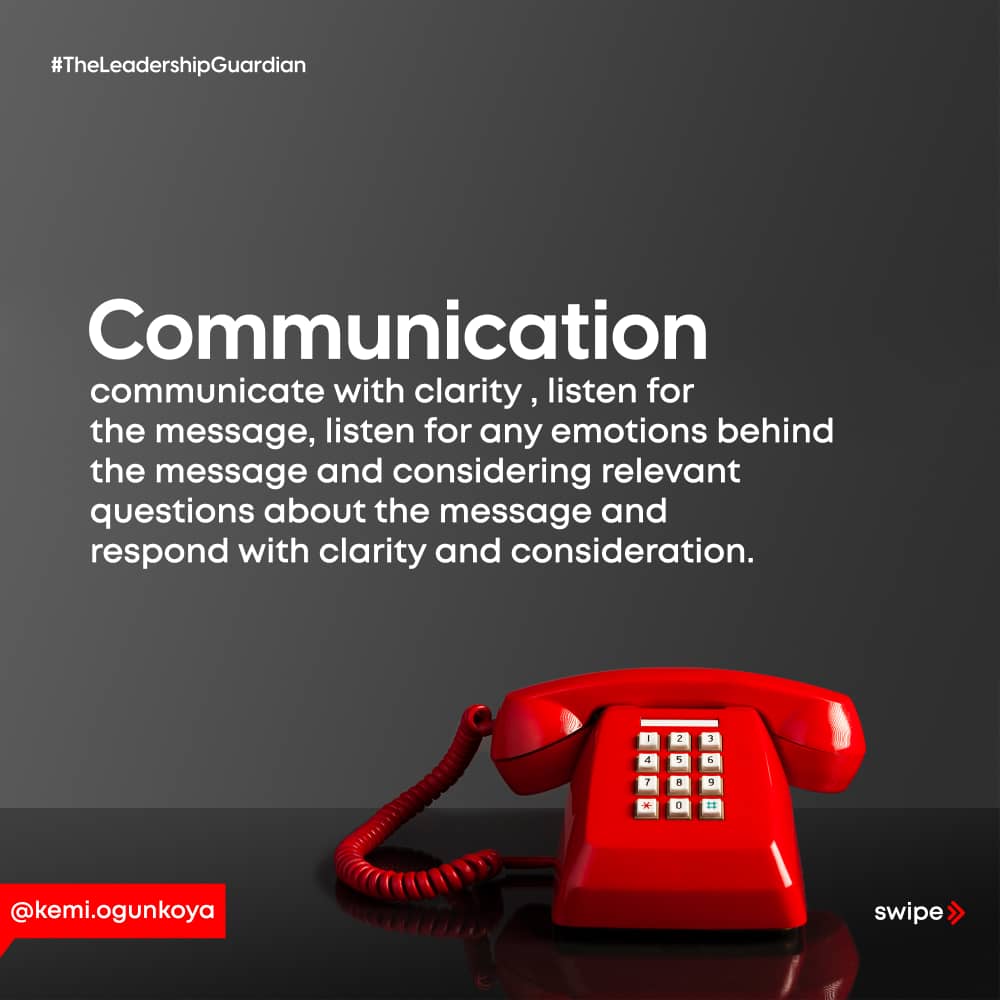
The workplace is not an isolated space, and even in isolated seasons (such as this), leaders must learn to communicate with clarity. Does your team understand the “why” beyond the “what” of a particular thing? How do you receive their responses, their voiced and salient opinions? Are mutual agreements established? Have expectations and deadlines been clearly defined? Can employees express conflicting views without the fear of backlashes? Leaders agree that communication is a cycle, not a one-off spin. It is continuous, and it is a two-way street.
Consequence: Consider this scenario. A staffer stays up to gab with friends. Consequently, he sleeps off by 4 am and jumps out of bed at a quarter to eight. Work resumes by 8 am, but he’s only managed to shower by then. He hurries out of the house, into traffic. He is at the office at ten minutes past nine, but he’s fifteen minutes late for a client meeting and the client is just storming out of the building in anger.
Do you get the drift? Actions – and inactions – have consequences, and most leaders overlook this minor but vital piece. It won’t always be a late arrival. It could be an ignored typo, a needless remark tossed at a colleague, an argument that leads to internal conflict.
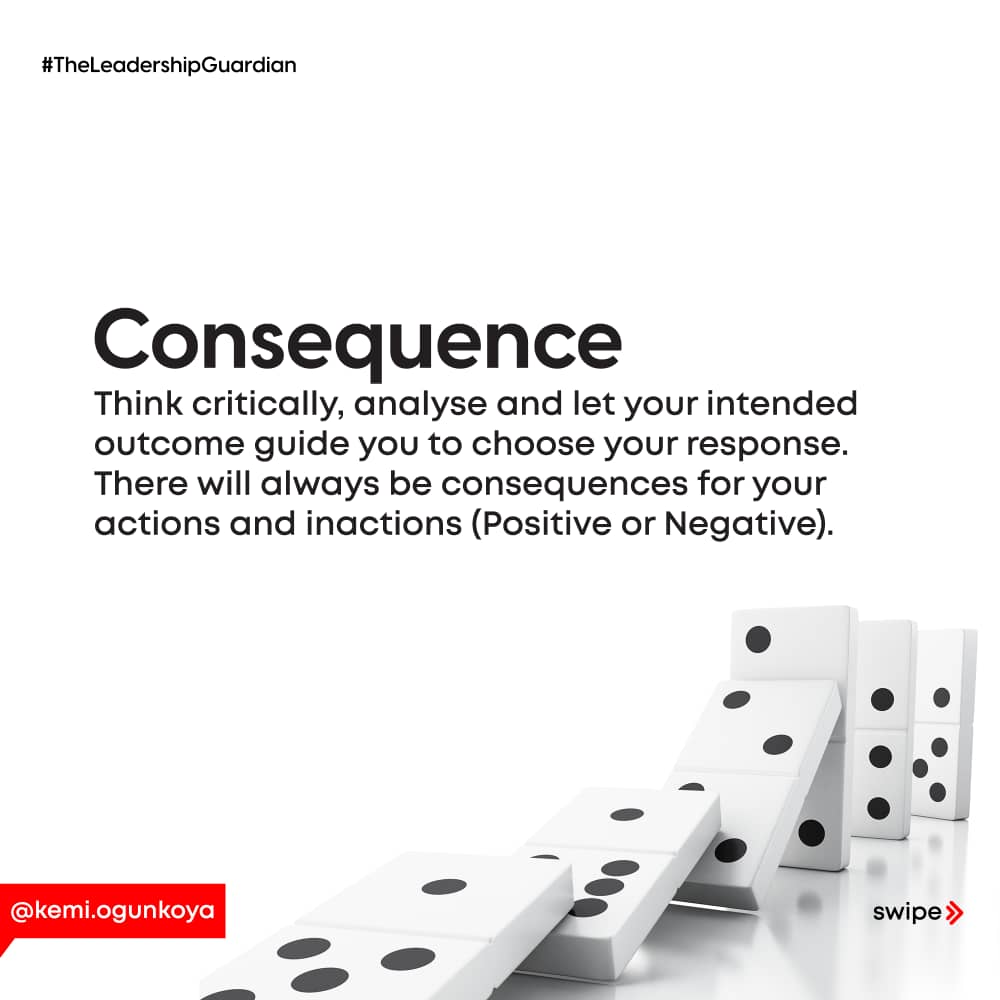
Effective leaders recognize that actions have consequences. You are always choosing. You are choosing now. You must admit this, and teach others to admit it, and live by it, also. As a leader there should be consequences for your actions and inactions and this you must be very aware of. Likewise, you need to ensure
Consistency: If you will show up every time you need to show up, you will achieve so much more than you could dream of. Consistency is the discipline that sustains a worker’s determination to try again and again until success is achieved. Leaders don’t quit. This does not mean that they hold on to an idea that doesn’t work. Leaders know that building Rome takes time, and time is a relative factor.
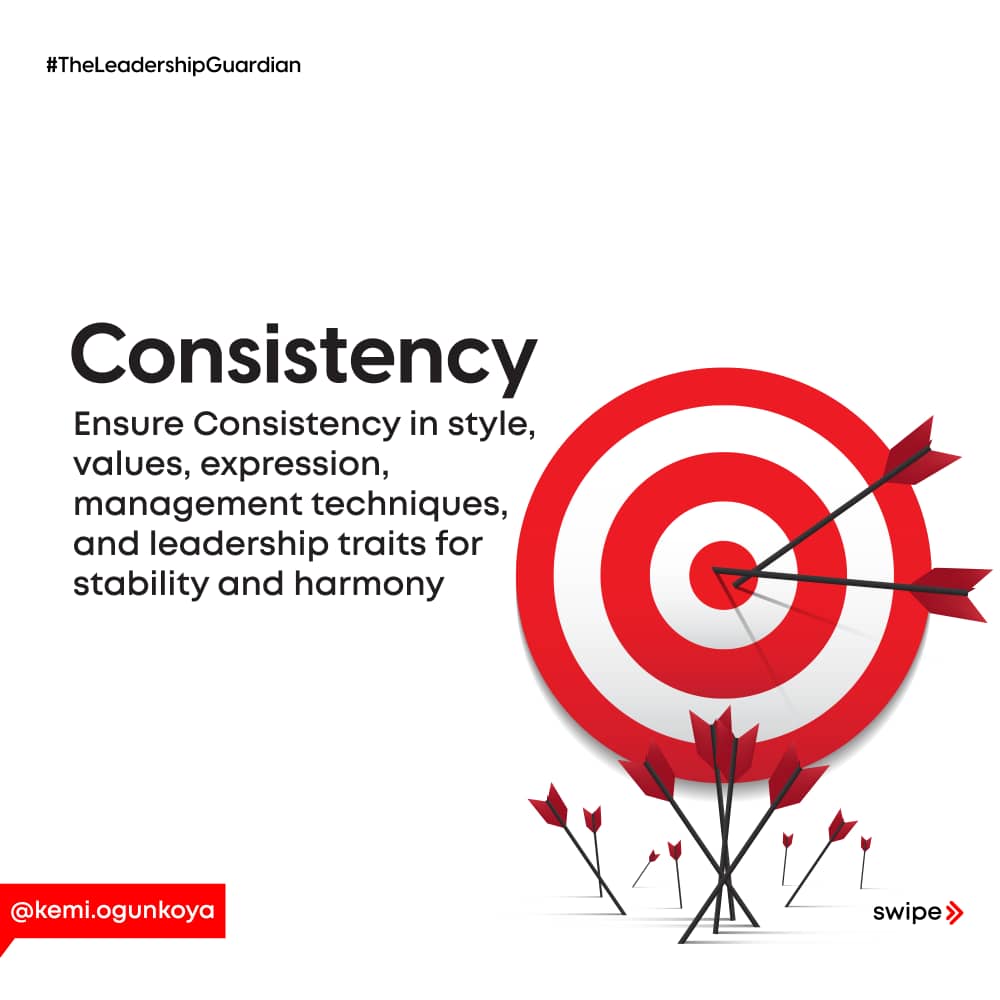
They are deliberate about investing efforts, even when it looks like results aren’t nearby. At work, consistent leaders are not quick to discard or abandon. They are rarely influenced by the attitude of others towards a goal. They keep their targets clear, aggregate efforts until sufficient and are consistent in their expression of their values and character. Consistency a key element of effective leadership and leaders need to equip themselves with it.
Critical Thinking: Logic, rationale, and foresight are three components of leaders who think critically. Critical thinking leaders are not easily swayed or blinded by emotions. They are objective about situations, and they provide responses that draw from logic and reason. Leaders who are critical thinkers are seldom pressured into giving opinions or picking a side.
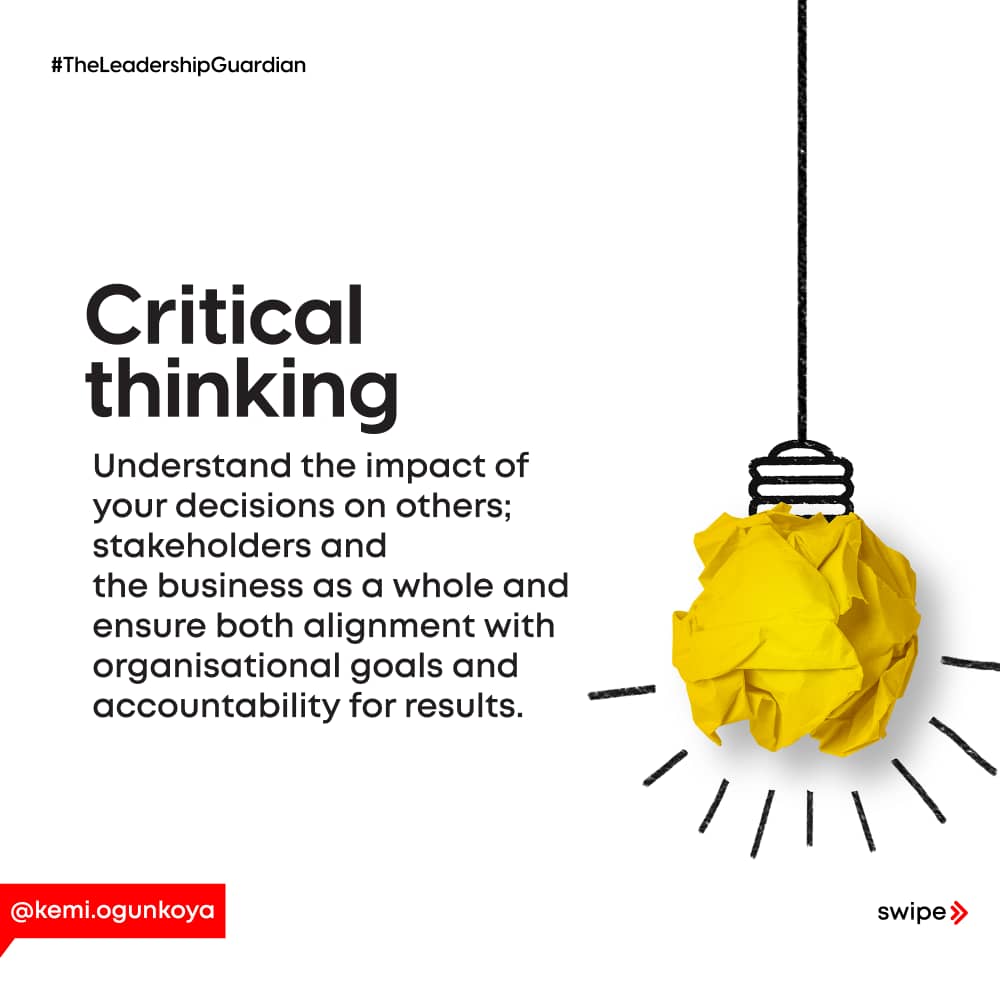
They consider multiple perspectives before forming conclusions. Do you pause and review before deciding, or are you often quick to make assumptions? Some leaders pride in being accurate assumers. But top leaders concede to the importance of critical thinking, and they make it an essential part of their workplace culture.
Consideration: Consideration addresses the ability of a leader to set aside his needs, emotions, and opinions, to give attention to the needs, emotions, and opinions of others. Consideration is a quality every workplace employee must embrace.
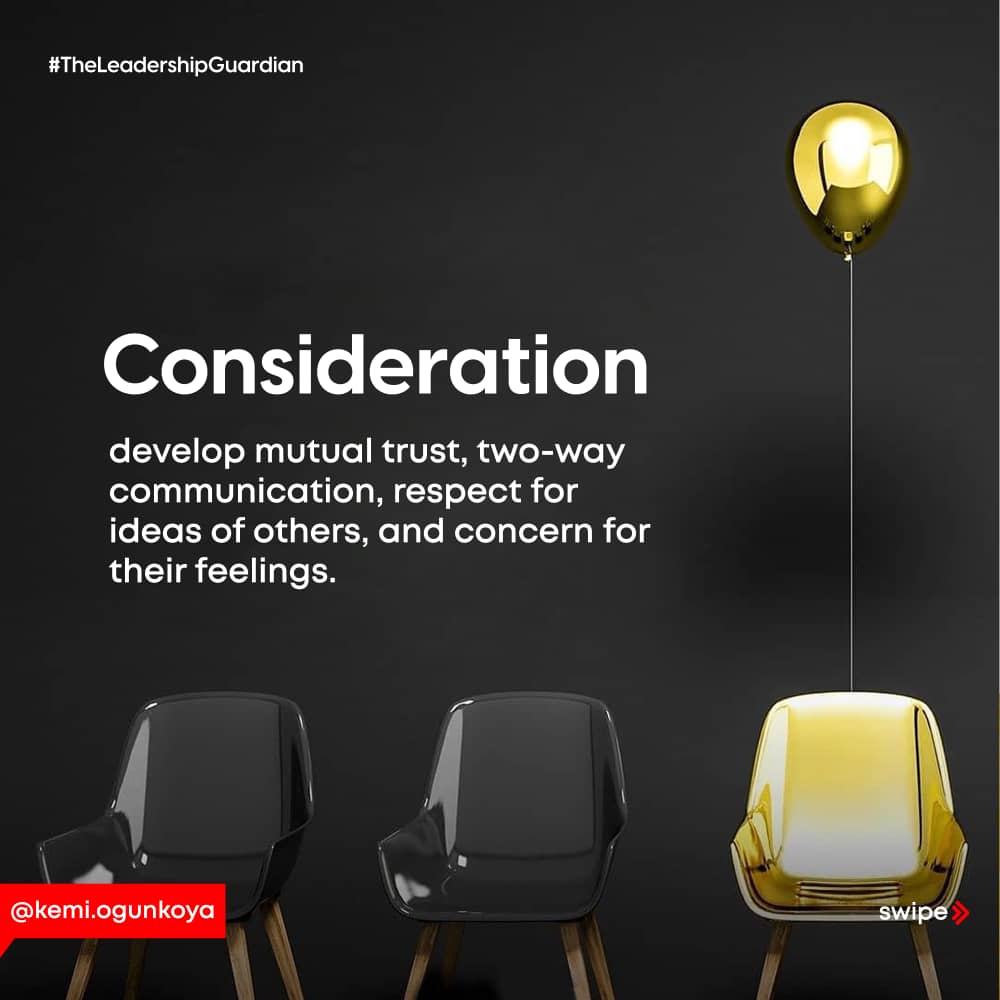
Healthy environments inspire employees towards optimal performances, and it is by choosing to be selfless, to mind the interests of others, that you breed healthy workplace interactions. Leaders wear armours of selflessness. They do not overstep boundaries, but they’re sensitive to encourage and cater to the needs of others.
Community: If you could run it alone, you would need no one. The workplace, painfully, is not a place of reserved existence. Companies, teams, groups, and people grow when the community is felt. It is said that to go fast, go alone, but to go far, go with others. The people who share a physical (or virtual) space with you are the most important people to your work. You never know how others could help you until they do. You may not need their skills, expertise, or experience. It could be a compliment on a slow day, a pop-in idea that helps move a project along, or their presence during a stressful season.
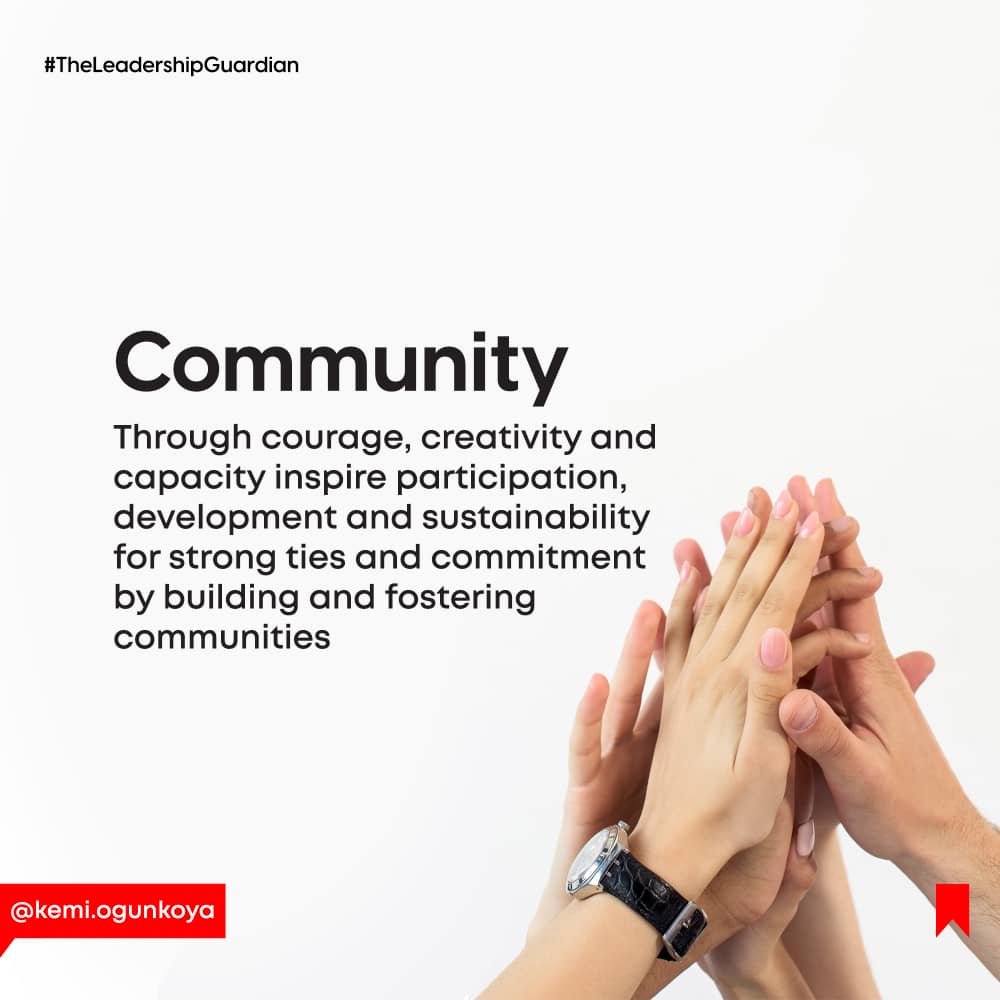
Be committed to your community. Encourage community building at work. Give and receive it openly. Accept that people – employees, colleagues, partners, mentors, clients – make the workplace, not the other way.
Transform your leadership by imbibing the twelve elements of the Dozen Model. You will be amazed at how much growth you would experience at work and as an individual. Effective leadership is possible at home, at the office, and in society. I am rooting for your excellence.
At Rellies Works, we believe that leaders have to possess the right competence to guarantee organisational sustainability and growth. As a result, we are committed to providing continuous support to leaders across various sectors to keep honing their transformative capabilities towards achieving organisational goals.
© 2022 All rights reserved
Kemi Ogunkoya ❤
3 Comments
[…] Having identified the lacuna of values and principle-based leadership for business, there are six vital elements that business leaders must possess: Clarity, character, competence, connection, critical thinking and consideration. […]
[…] the demands keep rising, and time “insufficient”, effective leaders cannot afford to compromise the efficient use of time. Leadership is reflective, active and […]
[…] hosted by Kemi Ogunkoya which brings phenomenal leaders together to converse on elements of here Dozen Model Leadership Framework which includes; Clarity, Connection, Character, Confidence, Consequence, Community, Consideration, […]